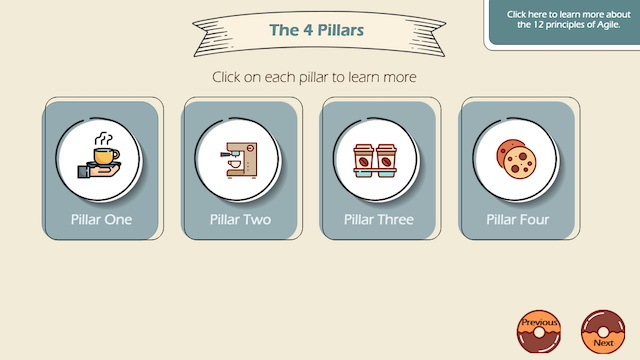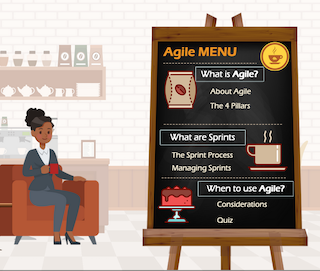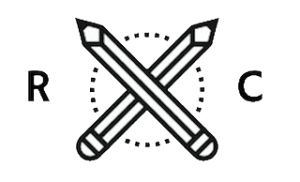Agile Coffeehouse

Executive Summary:
Using a short story-driven approach, a course was developed for eLearning professionals who want to learn more about Agile Project Management. It explains Agile methodology and covers the hows and whys of using Agile for eLearning projects, including key methods like organizing sprints. It is helpful for newbies to Agile and people who are familiar with the concept but want more practice using it as a project management tool.
Challenge:
Agile Project Management comes from the world of software development, but it has become increasingly popular in other sectors, including eLearning. However, eLearning professionals might not have a clear grasp of what Agile is all about, and they also might not realize that using Agile principles can help them work faster. In some cases eLearning Developers will experience a culture clash if they are working with stakeholders who use Agile methodology and they come into the environment without prior knowledge. The shift to remote work has made it even more important for eLearning professionals to understand Agile, because they are being asked to create bespoke online trainings under quick deadlines and rework them to meet changing learner needs. In the May 2020 cohort of the eLearning Community Project, we took the issue of eLearning for Agile as our prompt and set out to create a fun, interactive learning experience, while working on Agile organized teams ourselves.

Solution Criterion:
We needed a complete Storyline project which could be completed within a month and have as many interactive elements as possible included. The Agile for eLearning project we created aims to bridge this knowledge gap by helping eLearning Developers to:
-
Identify the features of Agile
-
Organize work into sprints
-
Determine when to use Agile
Selected Criterion
We decided center our training around basic Agile principles and working in sprints. For learners who wanted more, we included outside links to reference materials about the 12 Principles of Agile. Using Design Thinking principles, we decided to use a problem as the frame for our lesson. We took a common problem situation-an eLearning developer struggling with a tight deadline-and used it to create an interactive scenario. We created the character of Samantha to act as a lesson guide, explaining the principles of Agile to her coworker. We also knew that our audience would have a range of knowledge about Agile, and so we decided to have a free form menu so people could choose where to begin in the course and skip sections that were too basic.
Design and Development Process:
Since Agile is a complicated concept with many details, we needed a simple visual motif to engage our learners. As the Lead Scriptwriter I came up with the idea of using coffee as a metaphor for explaining sprints and built out the first versions of the script using the coffeeshop as an organizing theme. My team wrote the script and then passed it off to the Design Team for revisions, and I collaborated with the Design and Development Leads to create another iteration of the script based on a more refined version of our storyboard.
Challenges:
This was an all-volunteer project organized using Agile and involving stakeholders in many different time zones, many of whom had not used Agile before. Project attrition meant that some teams were consolidated. I didn’t have experience crafting scripts for Articulate before this project and so I had to learn as I went along.
Results:
Everyone on our team learned how to organize projects using Agile and how to maximize our efficiency by using Slack and Google Documents to work remotely with people in multiple time zones. The training we created is accessible and informative and our eLearning peers report that they are more comfortable using Agile after completing it.
Evaluation Methods:
You can click here to see how I would evaluate this project using the Kirkpatrick Model.
